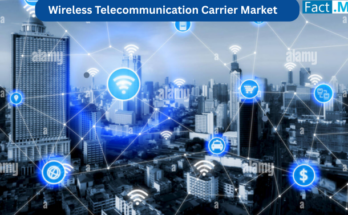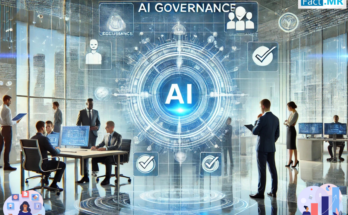The digital twin industry has emerged as a game-changer, revolutionizing how businesses operate and optimize their processes. By creating virtual replicas of physical assets and systems, organizations are gaining unprecedented insights, improving decision-making, and unlocking new opportunities for growth. In this article, we will explore the digital twin industry, its benefits, and its potential impact on various sectors.
What is a Digital Twin?
A digital twin is a virtual representation of a physical object or system, equipped with sensors and data analytics capabilities. By collecting real-time data, digital twins enable businesses to monitor, simulate, and analyze the performance of their assets, making it easier to identify inefficiencies, predict failures, and optimize operations.
Benefits of Digital Twins
a. Enhanced Operational Efficiency: Digital twins provide a comprehensive view of assets, allowing businesses to optimize processes, reduce downtime, and enhance productivity.
b. Improved Decision-Making: Real-time data and simulations enable informed decision-making, empowering organizations to make proactive adjustments and mitigate risks.
c. Cost Reduction: By identifying performance bottlenecks and optimizing asset utilization, digital twins help businesses reduce operational costs and increase resource efficiency.
d. Predictive Maintenance: Digital twins enable predictive maintenance, identifying potential issues before they escalate, minimizing downtime, and extending the lifespan of assets.
Applications Across Industries
a. Manufacturing: Digital twins enhance production efficiency, optimize supply chain management, and facilitate quality control.
b. Energy and Utilities: Digital twins enable real-time monitoring of energy infrastructure, aiding in predictive maintenance, optimizing energy distribution, and improving grid resilience.
c. Healthcare: Digital twins support personalized medicine, enabling physicians to simulate and analyze patient-specific conditions for accurate diagnosis and treatment.
d. Smart Cities: Digital twins facilitate urban planning, optimizing traffic flow, managing resources, and enhancing sustainability initiatives.
Challenges and Future Outlook
While the digital twin industry holds immense potential, there are challenges to overcome, such as data security, integration complexities, and the need for skilled professionals. However, advancements in technologies like artificial intelligence, machine learning, and the Internet of Things are expected to drive the industry’s growth, making digital twins more accessible and impactful.
The global digital twin market is valued at US$ 5 billion in 2023 and is predicted to touch US$ 95 billion by 2033
Success Stories and Case Studies
a. Aerospace Industry
Digital twins have been utilized to optimize aircraft maintenance schedules, reduce downtime, and improve safety. By analyzing real-time data from sensors embedded in aircraft components, engineers can predict maintenance needs and proactively address potential issues, ensuring smooth operations and minimizing disruptions.
b. Automotive Industry
Automotive manufacturers have leveraged digital twins to streamline production processes, improve quality control, and enhance customer experiences. By creating virtual replicas of assembly lines, manufacturers can simulate and optimize workflows, reducing production bottlenecks and improving overall efficiency.
c. Construction Industry
Digital twins are being used in the construction sector to improve project planning, optimize resource allocation, and enhance collaboration among stakeholders. By creating virtual models of construction sites, project managers can identify potential clashes, analyze different scenarios, and make informed decisions to avoid delays and cost overruns.
Emerging Trends and Innovations
a. Integration with Artificial Intelligence: The integration of digital twins with AI technologies enables advanced analytics, predictive capabilities, and autonomous decision-making. AI-powered digital twins can learn from historical data, identify patterns, and provide actionable insights for improved business outcomes.
b. Virtual Reality and Augmented Reality: The incorporation of virtual reality and augmented reality into digital twins offers immersive experiences and enhanced visualization. This combination allows stakeholders to interact with digital replicas, enabling better understanding, training, and troubleshooting.
c. Digital Twins for Sustainability: As sustainability becomes a key focus for businesses, digital twins are being used to optimize energy consumption, reduce emissions, and promote sustainable practices. By simulating and analyzing the impact of different scenarios, organizations can make informed decisions to minimize their environmental footprint.
Conclusion
The digital twin industry continues to evolve and transform various sectors, offering unprecedented insights, optimization opportunities, and improved decision-making capabilities. From manufacturing and energy to healthcare and smart cities, digital twins have the potential to reshape industries and pave the way for a more efficient and sustainable future. As businesses embrace this technology and overcome challenges, the benefits of digital twins will become even more evident, driving innovation and growth across the globe.
- Powering the Future: The Advancements and Applications of SiC and GaN Power Semiconductors
- DNA Data Storage Industry: Harnessing the Power of 220,160 Terabytes Storage




